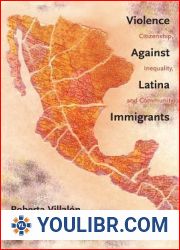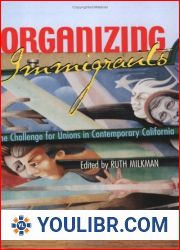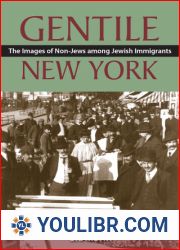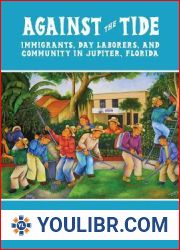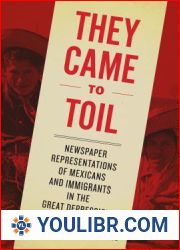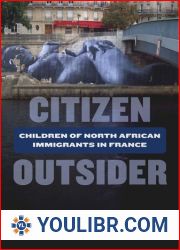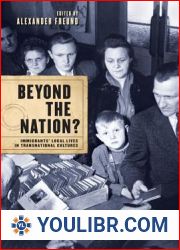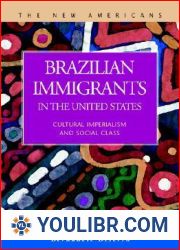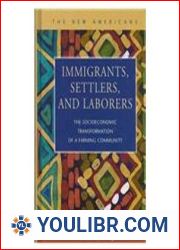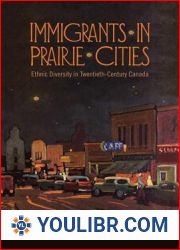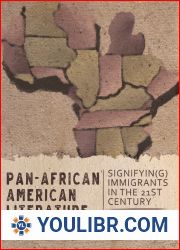
BOOKS - America Classifies the Immigrants: From Ellis Island to the 2020 Census

America Classifies the Immigrants: From Ellis Island to the 2020 Census
Author: Joel Perlmann
Year: March 26, 2018
Format: PDF
File size: PDF 2.6 MB
Language: English

Year: March 26, 2018
Format: PDF
File size: PDF 2.6 MB
Language: English

The book "America Classifies the Immigrants From Ellis Island to the 2020 Census" by Joel Perlmann provides a detailed account of the evolution of the process of classifying immigrants in the United States, from the early 20th century to the present day. The book focuses on the challenges faced by the government in categorizing immigrants based on prevailing ideas about race and nationality, and how these categories have had a profound impact on social policy and the maintenance of old and new divisions among different groups. In the late 19th and early 20th centuries, more than twenty million immigrants arrived in the United States, bringing with them diverse backgrounds, cultures, and identities. However, the government's attempts to classify these immigrants according to prevailing notions of race and nationality proved difficult, as these concepts were slippery, contested, and consequential. The author shows how self-appointed officials created the government's 1897 List of Races and Peoples, which shaped exclusionary immigration laws and influenced the wording of the US Census and federal studies. The book traces how debates over immigration policy institutionalized race distinctions between whites and non-whites, but also among whites, and how these distinctions remained limited until the end of the 1960s.
В книге Джоэла Перлманна «Америка классифицирует иммигрантов с острова Эллис по переписи 2020 года» приводится подробное описание эволюции процесса классификации иммигрантов в США, начиная с начала XX века и до наших дней. Книга посвящена проблемам, с которыми сталкивается правительство при категоризации иммигрантов на основе преобладающих представлений о расе и национальности, и тому, как эти категории оказали глубокое влияние на социальную политику и поддержание старых и новых различий между различными группами. В конце XIX - начале XX века в США прибыло более двадцати миллионов иммигрантов, которые принесли с собой различное происхождение, культуру и идентичность. Однако попытки правительства классифицировать этих иммигрантов в соответствии с преобладающими представлениями о расе и национальности оказались трудными, поскольку эти понятия были скользкими, оспариваемыми и вытекающими из этого. Автор показывает, как самозваные чиновники создали правительственный «Список рас и народов» 1897 года, который сформировал исключительные иммиграционные законы и повлиял на формулировки переписи населения США и федеральные исследования. В книге прослеживается, как дебаты по поводу иммиграционной политики институционализировали расовые различия между белыми и небелыми, а также между белыми, и как эти различия оставались ограниченными до конца 1960-х годов.
livre de Joel Perlmann, « L'Amérique classe les immigrants de l'île d'Ellis dans le recensement de 2020 », décrit en détail l'évolution du processus de classification des immigrants aux États-Unis depuis le début du XXe siècle jusqu'à nos jours. livre traite des difficultés rencontrées par le Gouvernement pour catégoriser les immigrants sur la base des conceptions dominantes de la race et de la nationalité et de la façon dont ces catégories ont profondément influencé la politique sociale et le maintien des différences anciennes et nouvelles entre les différents groupes. À la fin du XIXe siècle et au début du XXe siècle, plus de 20 millions d'immigrants sont arrivés aux États-Unis, avec des origines, une culture et une identité différentes. Toutefois, les tentatives du Gouvernement de classer ces immigrants en fonction des conceptions dominantes de la race et de la nationalité se sont révélées difficiles, car ces notions étaient glissantes, contestées et en résultaient. L'auteur montre comment les fonctionnaires imposés ont créé la Liste des races et des peuples du gouvernement de 1897, qui a formé des lois d'immigration exceptionnelles et a influencé la formulation du recensement américain et les études fédérales. livre montre comment le débat sur les politiques d'immigration a institutionnalisé les différences raciales entre les Blancs et les non-Blancs, ainsi qu'entre les Blancs, et comment ces différences sont restées limitées jusqu'à la fin des années 1960.
libro de Joel Perlmann «América clasifica a los inmigrantes de la isla Ellis según el censo de 2020» proporciona una descripción detallada de la evolución del proceso de clasificación de inmigrantes en Estados Unidos, desde principios del siglo XX hasta la actualidad. libro aborda los desafíos que enfrenta el Gobierno al categorizar a los inmigrantes sobre la base de las percepciones predominantes de raza y nacionalidad, y cómo estas categorías han tenido una profunda influencia en las políticas sociales y en el mantenimiento de viejas y nuevas diferencias entre los diferentes grupos. A finales del siglo XIX y principios del XX llegaron a Estados Unidos más de veinte millones de inmigrantes que trajeron consigo diferentes orígenes, cultura e identidad. n embargo, los intentos del Gobierno por clasificar a estos inmigrantes de acuerdo con las percepciones predominantes de raza y nacionalidad han resultado difíciles, ya que estos conceptos han sido resbaladizos, cuestionados y consecuentes. autor muestra cómo los funcionarios autodenominados crearon la «Lista de Razas y Pueblos» del gobierno de 1897, que formó leyes migratorias exclusivas e influyó en la redacción del Censo de Estados Unidos y los estudios federales. libro muestra cómo el debate sobre las políticas de inmigración institucionalizó las diferencias raciales entre blancos y no blancos, así como entre blancos, y cómo estas diferencias permanecieron limitadas hasta finales de los 60.
Il libro di Joel Perlmann, «L'America classifica gli immigrati da Ellis Island al censimento del 2020», descrive in dettaglio l'evoluzione del processo di classificazione degli immigrati negli Stati Uniti, dall'inizio del XX secolo ad oggi. Il libro è incentrato sui problemi che il governo deve affrontare nel categorizzare gli immigrati sulla base delle percezioni prevalenti della razza e della nazionalità, e sul modo in cui queste categorie hanno influenzato profondamente le politiche sociali e il mantenimento delle differenze vecchie e nuove tra i vari gruppi. Tra la fine del XIX e l'inizio del XX secolo, oltre 20 milioni di immigrati arrivarono negli Stati Uniti e portarono con sé diverse origini, culture e identità. Tuttavia, i tentativi del governo di classificare questi immigrati in base alle percezioni prevalenti di razza e nazionalità si sono rivelati difficili, perché questi concetti erano scivolosi, contestati e conseguenti. L'autore mostra come i funzionari impostori crearono la Lista delle Razze e dei Popoli del governo del 1897, che formò leggi eccezionali sull'immigrazione e influenzò la formulazione del censimento americano e la ricerca federale. Il libro mostra come il dibattito sull'immigrazione abbia istituzionalizzato le differenze razziali tra bianchi e non bianchi, e come queste differenze siano rimaste limitate fino alla fine degli anni Sessanta.
In Joel Perlmanns Buch „America Classifications Immigrants from Ellis Island by Census 2020“ wird die Entwicklung des Zuwanderungsklassifizierungsprozesses in den USA vom Beginn des 20. Jahrhunderts bis heute detailliert beschrieben. Das Buch konzentriert sich auf die Herausforderungen, denen sich die Regierung bei der Kategorisierung von Einwanderern aufgrund vorherrschender Vorstellungen von Rasse und Nationalität gegenübersieht, und wie diese Kategorien einen tiefgreifenden Einfluss auf die Sozialpolitik und die Aufrechterhaltung alter und neuer Unterschiede zwischen verschiedenen Gruppen hatten. Ende des 19. und Anfang des 20. Jahrhunderts kamen mehr als zwanzig Millionen Einwanderer in die USA, die unterschiedliche Hintergründe, Kulturen und Identitäten mitbrachten. Die Versuche der Regierung, diese Einwanderer nach vorherrschenden Vorstellungen von Rasse und Nationalität zu klassifizieren, erwiesen sich jedoch als schwierig, da diese Konzepte schlüpfrig, umstritten und daraus abgeleitet waren. Der Autor zeigt, wie selbsternannte Beamte die Liste der Rassen und Völker der Regierung von 1897 erstellten, die außergewöhnliche Einwanderungsgesetze bildete und die Formulierung der US-Volkszählung und der Bundesforschung beeinflusste. Das Buch zeichnet nach, wie die Debatte über die Einwanderungspolitik die Rassenunterschiede zwischen Weißen und Nicht-Weißen sowie zwischen Weißen institutionalisiert hat und wie diese Unterschiede bis in die späten 1960er Jahre begrenzt blieben.
''
Joel Pearlmann'ın "America Classifies Ellis Island Immigrants in the 2020 Census" (Amerika Ellis Adası Göçmenlerini Nüfus Sayımında Sınıflandırıyor) adlı kitabı, 20. yüzyılın başından günümüze Amerika Birleşik Devletleri'ndeki göçmenlerin sınıflandırılması sürecinin evriminin ayrıntılı bir tanımını sunmaktadır. Kitap, hükümetin göçmenleri ırk ve milliyet hakkındaki hakim inançlara göre kategorize etmede karşılaştığı zorluklara ve bu kategorilerin sosyal politikayı ve farklı gruplar arasındaki eski ve yeni farklılıkların sürdürülmesini nasıl derinden etkilediğine odaklanıyor. XIX'in sonlarında - XX yüzyılın başlarında, yirmi milyondan fazla göçmen ABD'ye geldi ve onlarla birlikte farklı bir köken, kültür ve kimlik getirdi. Bununla birlikte, hükümetin bu göçmenleri ırk ve milliyet hakkındaki hakim inançlara göre sınıflandırma girişimleri, bu kavramların kaygan, tartışmalı ve sonuç olarak ortaya çıktığı için zor olduğunu kanıtladı. Yazar, kendi kendini atayan yetkililerin, hükümetin özel göç yasalarını şekillendiren ve ABD nüfus sayımı dilini ve federal araştırmalarını etkileyen 1897 "Irk ve Ulus Listesi'ni nasıl yarattığını gösteriyor. Kitap, göç politikası konusundaki tartışmanın beyazlar ve beyaz olmayanlar arasındaki ve beyazlar arasındaki ırksal farklılıkları nasıl kurumsallaştırdığını ve bu farklılıkların 1960'ların sonlarına kadar nasıl sınırlı kaldığını izliyor.
كتاب | جويل بيرلمان «America Classies Ellis Island Immigrants in the 2020 Census» وصفا مفصلا لتطور عملية تصنيف المهاجرين في الولايات المتحدة منذ بداية القرن العشرين وحتى الوقت الحاضر. يركز الكتاب على التحديات التي تواجهها الحكومة في تصنيف المهاجرين بناءً على المعتقدات السائدة حول العرق والجنسية، وكيف أثرت هذه الفئات بشكل عميق على السياسة الاجتماعية والحفاظ على الاختلافات القديمة والجديدة بين الفئات المختلفة. في أواخر القرن التاسع عشر - أوائل القرن العشرين، وصل أكثر من عشرين مليون مهاجر إلى الولايات المتحدة، جلبوا معهم أصلًا وثقافة وهوية مختلفة. ومع ذلك، ثبت أن محاولات الحكومة لتصنيف هؤلاء المهاجرين وفقًا للمعتقدات السائدة حول العرق والجنسية صعبة، لأن هذه المفاهيم كانت زلقة ومتنازع عليها وتبعية. يُظهر المؤلف كيف أنشأ المسؤولون المعينون ذاتيًا «قائمة العرق والأمة» الحكومية لعام 1897، والتي شكلت قوانين الهجرة الحصرية وأثرت على لغة التعداد السكاني الأمريكية والأبحاث الفيدرالية. يتتبع الكتاب كيف أدى الجدل حول سياسة الهجرة إلى إضفاء الطابع المؤسسي على الاختلافات العرقية بين البيض وغير البيض، وكذلك بين البيض، وكيف ظلت هذه الاختلافات محدودة حتى أواخر الستينيات.








 49
49  2 TON
2 TON

